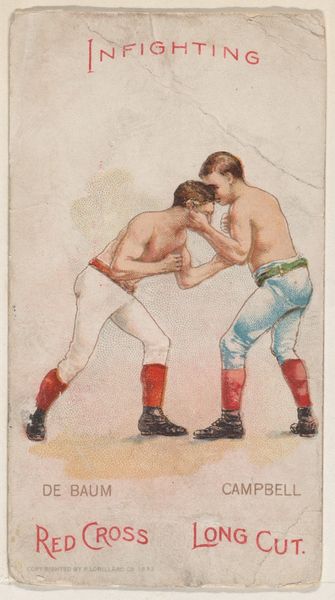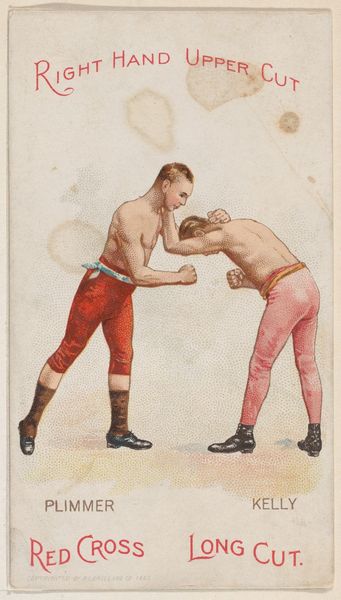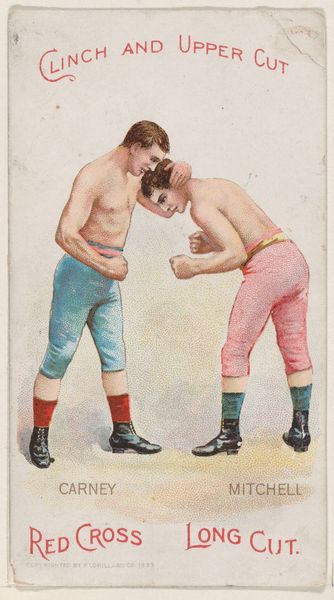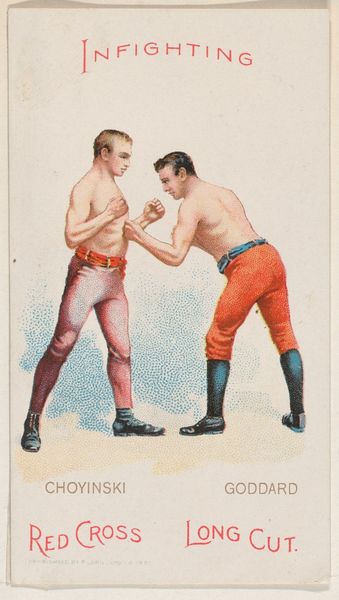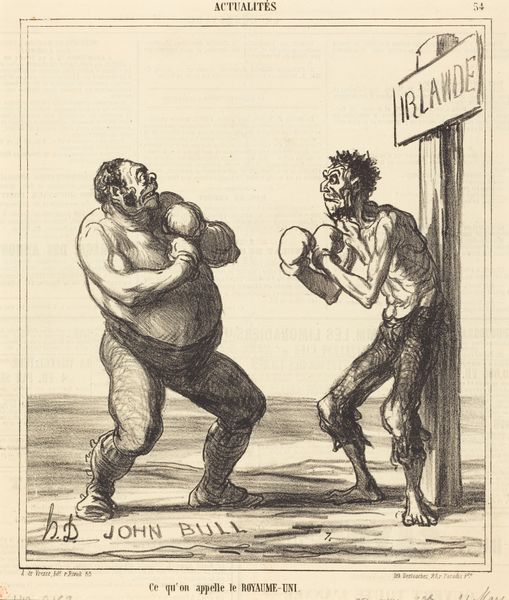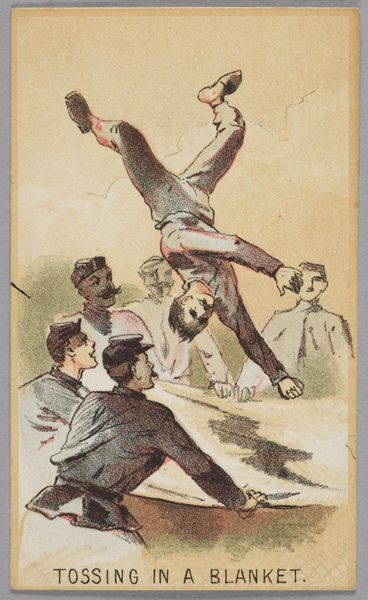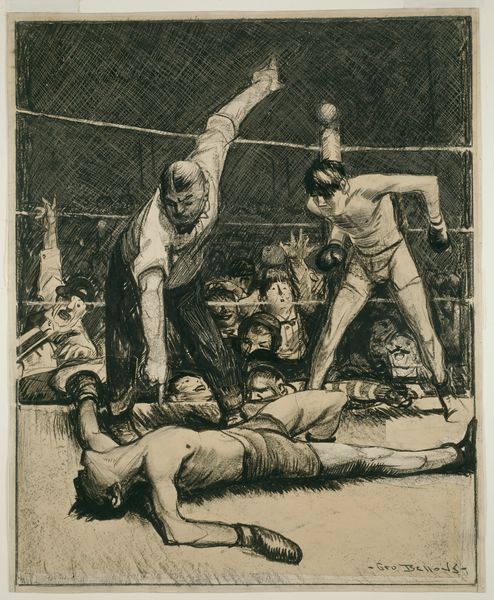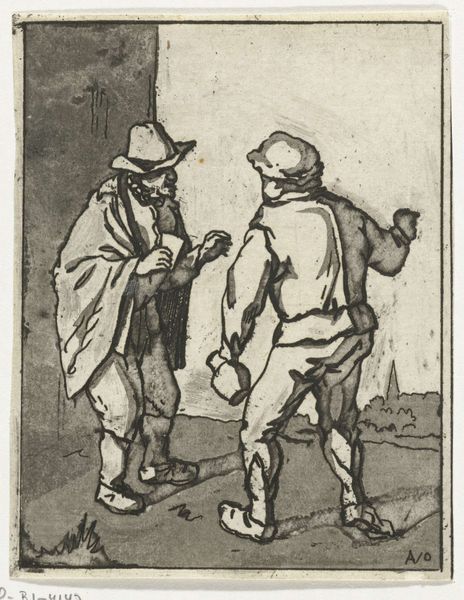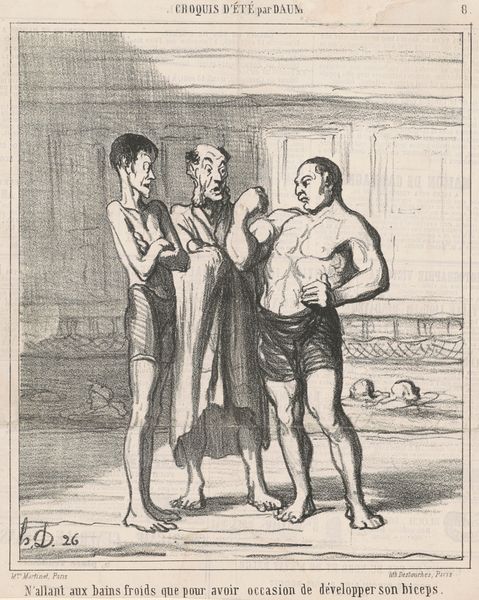
In Chancery, George Godfrey and Joe Lannon, from the Boxing Positions and Boxers series (N266) issued by P. Lorillard Company to promote Red Cross Long Cut Tobacco 1893
0:00
0:00
drawing, print
#
drawing
# print
#
figuration
#
coloured pencil
#
genre-painting
#
history-painting
#
academic-art
Dimensions: Sheet: 4 in. × 2 1/4 in. (10.2 × 5.7 cm)
Copyright: Public Domain
Editor: So, this piece, "In Chancery, George Godfrey and Joe Lannon," is from 1893. It's a print and drawing, part of a series promoting Red Cross Long Cut Tobacco. The positioning of the boxers is really interesting and dynamic! I'm curious—what stands out to you in this work? Curator: What fascinates me here is its relationship to mass production. This isn't 'high art' aiming for some elevated aesthetic experience. It's commercial ephemera. It was explicitly made to sell tobacco. The printing process itself is central, a means to circulate images of boxing and, crucially, the Red Cross brand. Think about the labour involved, both in boxing and the printing: two distinct forms of physical exertion feeding into a system of consumption. Editor: That's interesting, I hadn't really thought about the process that way. How does the medium, this kind of mass-produced print, affect how we see the figures themselves? Curator: Well, the cheap production allowed these images to circulate widely, shaping perceptions of these boxers, who likely were working-class figures themselves, and popularizing the sport. Consider the relationship between the advertised product and the masculinity associated with boxing. Were these figures complicit in this brand of promotion? How did labouring class aesthetics relate to commodity production? Editor: I guess I was thinking about it more in terms of artistic representation, but this makes me think more critically about how and why images like this are created and circulated. Curator: Precisely. This object isn't just passively reflecting reality. It is actively working within a complex economic and social network. Seeing art through a material lens like this makes you question the relationship between artistic practice, labour, and the wider world of consumption. Editor: This has made me look at this image—and the larger context in which it exists—very differently! Thank you for opening my eyes to that material and economic context. Curator: My pleasure. Sometimes the most telling details lie not in the depicted scene, but in the object's journey through production, circulation, and ultimately, consumption.
Comments
No comments
Be the first to comment and join the conversation on the ultimate creative platform.
